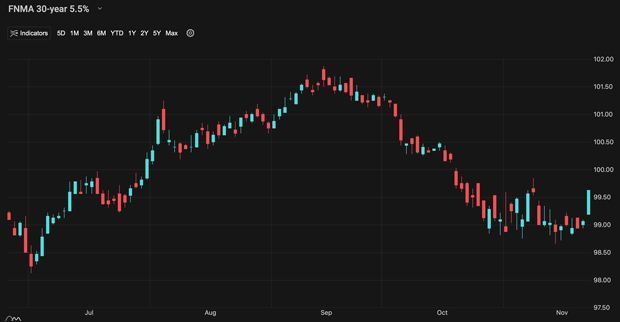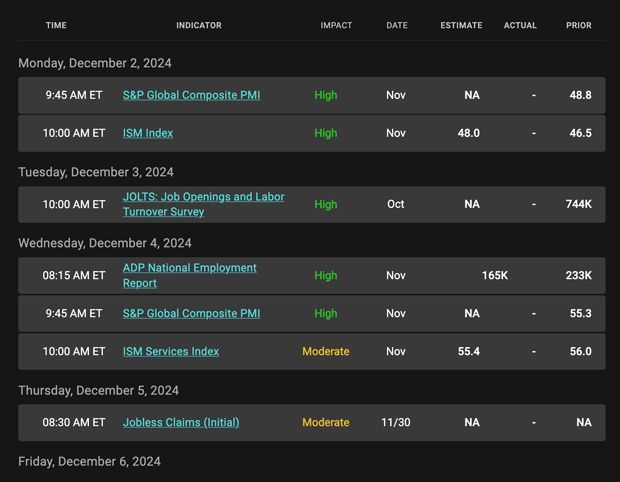In this holiday shortened week as we celebrate Thanksgiving, home loan rates touched the lowest levels in over a month. Let's discuss what happened and talk about the week ahead.
"Low rider don't use no gas now, low rider don't drive too fast". Low Rider by War.
Markets Celebrate New Treasury Secretary
On Monday, both stocks and bonds celebrated the announcement that Scott Bessent was nominated to be the next Treasury Secretary. Bessent is viewed as a fiscal hawk and someone who will look to cut wasteful government spending. He also shares a goal to increase economic growth and daily oil output, both of which are favorable for stocks and bonds.
Israel - Hezbollah Cease Fire
Early in the week, it was announced that Israel and Hezbollah agreed to a cease-fire. This was very welcome news, and hopefully, we will see Mideast tensions continue to ease.
Normally, the good news would hurt the bond market and interest rates. However, this news also helped push oil prices lower, which bonds favor for their disinflationary effects.
Short Sellers Scrambling
In the financial markets, certain participants engage in speculative activities by betting on the movement of interest rates. These individuals are known as short sellers. They typically anticipate that interest rates will rise and position themselves accordingly by selling bonds they do not yet own, intending to purchase them back at a lower price once rates increase. However, on Monday, there was a significant and unexpected improvement in interest rates, which led to a sharp decline in the yields of bonds. As a result, many of these short sellers found themselves in a challenging situation. Their bets on higher interest rates did not pan out as anticipated, forcing them to buy back the bonds to close their positions. This buying activity from short sellers, who needed to exit their trades, contributed to driving interest rates down further, amplifying the initial improvement in rates.
Treasury Yields Dropping
Long-term Treasury yields ebb and flow with those of mortgage rates. In response to the week's bond-friendly news, the 10-year Treasury Note yield fell to 4.26%, a level last seen in mid-October.
The 10-year Note yield had been trading in a range between 4.50% and 4.30%. A convincing move beneath 4.30% would likely make 4.30% a new ceiling of yield resistance, preventing rates from climbing.
Bottom line: Interest rates made great strides in attempting to stabilize from the steep selloff that started back in September. With the new Administration and fiscal policy not starting for nearly two months, expect continued volatility with potentially large interest rate swings.
Looking ahead
Next week, we will receive important readings on the labor market, including the November Non-Farm Payroll Report. This report will likely confirm whether last month's weak October payroll was an anomaly caused by multiple hurricanes and the Boeing strike or if it confirms the labor market is weakening. Fed Chair Powell has shared on numerous occasions that "further cooling in the labor market would be unwelcome."
Mortgage Market Guide Candlestick Chart
Mortgage bond prices determine home loan rates. The chart below is a one-year view of the Fannie Mae 30-year 5.5% coupon, where currently closed loans are being packaged. As prices move higher, rates decline, and vice versa.
If you look at the right side of the chart, you can see how prices have jumped higher out of the sideways trend, lowering rates to the best levels in over a month.
Chart: Fannie Mae 30-Year 5.5% Coupon (Wednesday, November 27, 2024)

Economic Calendar for the Week of December 2 - 6

Registered Mortgage Broker-NYS Department of Financial Services
All mortgage loans arranged with third party providers.
NYS, CT, NJ, FL Department of Financial Services
Bob Moulton, Mortgage Broker | All Rights Reserved | Accessibility & Privacy Policy | Powered by PS Digital


